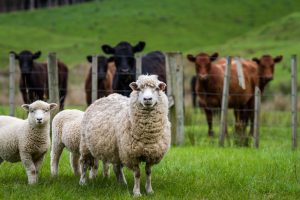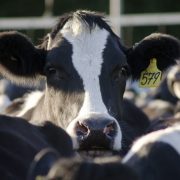A survey of sheep and/or cattle farmers in the UK shows confusion over the diagnosis and control of rumen fluke and liver fluke
A survey of sheep and/or cattle farmers in the UK shows confusion over the diagnosis and control of rumen fluke and liver fluke

Open access
In our edition of: Dec 2022
In our categories of: farm animals
our summary:
Hoyle, R.C. et al. (2022) A survey of sheep and/or cattle farmers in the UK shows confusion over the diagnosis and control of rumen fluke and liver fluke. Veterinary Parasitology, 312, p. 109812.
The aim of this online survey study was to capture the awareness of rumen fluke and to describe the current control measures used by sheep and/or cattle farmers in the UK for both liver fluke and rumen fluke.
The survey ran for four months between December 2019 and March 2020. It was open to any farm in the UK with sheep and/or cattle and was advertised extensively via a range of media and stakeholder groups. The survey collected data on awareness of liver and/or rumen fluke, presence of either on the farm, treatment regimes, and, for those who had treated for liver fluke, awareness of triclabendazole resistance and if they knew of its presence on their farm.
A total of 451 usable responses were received, 85.76% of respondents bred sheep, 46.10% had beef sucklers, 25.38% had beef stores/fattening and 7.79% had a dairy herd.
The majority (70.28%) were aware of rumen fluke, with farms with higher numbers of breeding sheep more likely to be aware of rumen fluke. Of those aware of rumen fluke, 19.87% reported its presence on their farm, 28.71% its absence and 51.42% did not know. When asked about methods of detecting rumen fluke, 42.86% cited methods that are commonly used for detecting liver fluke. Whilst respondents expressed concern about rumen fluke it was less of a concern than liver fluke.
98.89% of respondents were aware of liver fluke. Of these, 67.79% reported the presence of liver fluke infection on their farm. Liver fluke presence on farm was associated with higher numbers of breeding sheep.
Previous treatment for rumen fluke was associated with reported presence or concern of presence on farm. 89.24% of respondents who were aware of liver fluke stated that they had previously treated for liver fluke, previous treatment was also associated with concern for liver fluke. Respondents were more likely to treat annually for liver fluke than rumen fluke. Triclabendazole was the drug most frequently cited for the treatment of liver fluke (53% sheep treatments, 33.87% cattle). Only 34.92% who had treated sheep for rumen fluke and 42.11% who had treated cattle used oxyclozanide, the only drug with reported efficacy against rumen fluke.
83.75% of respondents who had previously treated for liver fluke infection were aware of triclabendazole resistance in liver fluke. Of those aware of resistance, 15.27% recorded knowing it was present on their farm.
Limitations of the study are the potential selection bias of the respondents with farmers who have experience with liver and/or rumen fluke more likely to respond. There may also have been recall bias when asking farmers about treatments events over the course of a year.
This study suggests there is some confusion amongst farmers between liver and rumen fluke and their diagnosis and treatment and highlights the need to provide advice and guidance on the control of both parasites.
The following may also be of interest:
Control of worms sustainably [COWS] [online]. Available from: https://www.cattleparasites.org.uk/ [Accessed 20 December 2022]
Control of liver and rumen fluke in cattle [COWS] [online]. Available from: https://www.cattleparasites.org.uk/app/uploads/2020/01/liver-and-rumen-fluke-110120.pdf-.pdf [Accessed 20 December 2022]
Liver fluke: A guide to test-based control [COWS] [online]. Available from: https://www.cattleparasites.org.uk/app/uploads/2022/12/FINAL-Fluke-Diagnostics-Treatment.pdf [Accessed 20 December 2022]
Claiming CPD for reading inFOCUS articles
Reading and reflecting on articles can count towards your CPD, and we have a template to help you with the process.
Image copyright attribute: Heath Johnson
Join the discussion
We encourage discussion on all material highlighted in each edition of inFOCUS. Use the button below to join the conversation on Twitter and include your comment in the feed for this issue.





Leave a Reply
Want to join the discussion?Feel free to contribute!